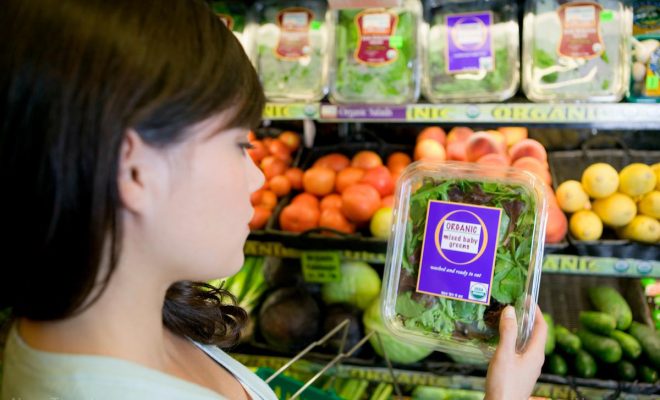Why Cutting Down on Sugar Might Be the Best Health Insurance Available

Authorand educator Gary Taubes is among a small group of health investigators whohave been relentlessly spreading the word about the strong associations between sugar consumption and the rising rates of obesity and major diseases such as diabetes, cancer,heart disease, and Alzheimer’s.
Taubes’ latest book iscalled “The Case Against Sugar,” which covers topics such as whether sugarshould be considered a food or a drug, its addictive nature, and the healthramifications of eating a high-sugar processed food diet. All of these topicsare also covered in this featured lecture.
HowMuch Sugar Do You Eat Each Day?
If you’re like most people, you might not know the exact answer tothat question, and the reason for that is because it’s in virtually all processed foods, includingproducts you would never suspect would have added sugar in it.
For example, fruitflavored yogurt can contain upwards of 20 grams of sugar, or 5 teaspoons, perserving, and a package of sweet and sour chicken with rice contains morethan 12 teaspoons (more than a can of soda).
Sugar can also hide under less familiar names, such as dextrose,maltose, galactose and maltodextrin, just to name a few.1
High-sugar meals are a problem largely relegated to the processedfood industry. You don’t really have this problem when you’re cooking fromscratch with whole foods, which are packed with natural flavors. Then all youneed is seasoning.
Rarely, if ever, would you consider adding several teaspoons ofsugar to a home-cooked meal.
MostAmericans Consume FAR Too Much Sugar
According to a 2014study,2 10 percent of Americans consume 25 percent or more of their daily calories inthe form of added sugars. Most adults (71.4 percent) get at least 10 percent oftheir daily calories from added sugar. The ramifications of this aresignificant.
People who consumed 21percent or more of their daily calories in the form of sugar were TWICE aslikely to die from heart disease compared to those who got 7 percent or less ortheir daily calories from added sugar.
The risk was nearly TRIPLED among those who consumed25 percent or more of their daily calories from added sugar. That means atleast 10 percent of the adult population in the U.S. are in this tripled-riskcategory.
Personally I have chosen to consume an ultra-lowcarb diet with no added sugars and about 35 grams of net carbs a day (totalcarbs minus fiber). I prefer not to damage my mitochondria with a dirty fuellike glucose.
SugarRecommendations
TheAmerican Heart Association and the World Health Organization recommend limitingyour daily addedsugar intake to 9teaspoons (38 grams) for men, and 6 teaspoons (25 grams) for women. The limitsfor children range from 3 to 6 teaspoons (12- 25 grams) per day, depending onage.
Four grams of sugar isequivalent to about 1 teaspoon, and I strongly recommend limiting your dailyfructose intake to 25 grams or less from all sources, including natural sources such as fruit — regardless of your sex.That equates to just over 6 teaspoons of total sugar per day as sugar is halffructose.
If you’re among the 80percent who have insulin or leptin resistance or who are overweight or taking statins, or who have metabolic diseases such as diabetes and high blood pressure, you’d be wise to restrict your totalfructose consumption to as little as 15 grams per day until you’ve normalizedyour insulin and leptin levels.
Theaverage American consumes around 20 teaspoons of added sugar a day. This is morethan three times the recommended amount, and the evidence clearly indicatesthat this dietary trend goes hand in hand with our current epidemics of obesityand chronic disease.
Sugar Feeds Disease
As noted in Taubes’lecture, “sugar” includes both sucrose (table sugar) and fructose in the form of high fructosecorn syrup or HFCS.
While some researchershave pointed out that fructose produces more metabolic harm than sucrose,Taubes believes this is a fruitless discussion, as both act as fuel for diseasewhen consumed in excess.
As sugar consumptionhas risen — especially since the advent of processed foods and drinks — obesity anddiabetes rates have skyrocketed worldwide. For the first time in history, obesepeople now outnumber those who are underweight,3,4,5,6 and half of adult Americans have either full blown diabetes or prediabetes.
In the U.S., diabetes rateshave increased 900 percent since the early 1960s, and it’s now affectingpeople at an increasingly younger age, whereas type 2 diabetes used to be a raredisease that hit the middle-aged and elderly.
If you go further backin time, you see that diabetes rates began to spike around the mid-1920s, andcompared to that time period, diabetes rates have now risen by an absolutelyastounding 9,000 percent!
According to Taubes,one of the reasons it’s gotten this bad is because health professionals havebeen under the mistaken assumption that they understand the causes of obesityand diabetes.
Clearly they don’t. Orelse they’d have made some significant changes to their recommendations once itbecame clear that prevalence kept going up despite their best efforts ateducating people about how to eat “right.” The truth is conventional dietrecommendations have provoked theseepidemics.
A major fallacy is thateating fat makes you fat. This is entirely false, and low-fat recommendationshave likely ruined a significant number of lives over the past few decades.
As I’ve said many times before, eating fat doesn’t make you fat, not being able toburn fat makes you fat. To correct this metabolic imbalance, you ideally needto restrict net carbs to under 50 grams per day, limit protein to 1 gram/kg oflean body mass, and consume only high quality fat sources.
The Metabolic Impact of Sugar
All foods havemetabolic and hormonal effects, but they’re not identical. Carbs are processeddifferently and produce different results compared to proteins and fats, forexample. Different types of carbohydrates are also processed differently.
When it comes to sugar,fructose is metabolized in your liver, while glucose is metabolized in everycell of your body. According to Dr. Robert Lustig, a neuroendocrinologist who has done extensive research on the role of sugar in your body, yourliver can safely metabolize only about 6 teaspoons of added sugar per day.Any excess gets metabolized into body fat.
Conventional wisdomsays that obesity is caused by consuming more calories than your body can burn,and to lose weight, you have to either cut calories, exercise more, or both. Asnoted by Taubes, the conventional view is that there are no bad foods, only badbehavior.
As it turns out, thissimply isn’t true , and Taubes isn’t the only one to bring up the idea thatsugar has a toxic influence. Dr. Lustig introduced the concept of fructose being “isocaloric but notisometabolic.”
What thismeans is even if you get the identical amount of calories from fructose orglucose, fructose and protein, or fructose and fat, the metabolic effect will beentirely different. Different nutrients provoke different hormonal responses,and those hormonal responses determine, among other things, how much fat youaccumulate.
Because it’s metabolized in your liver, which has alimited capacity to process it, fructose tends to pack on the most pounds the fastest.But excess sucrose also has detrimental effects, and promotes insulinresistance just like fructose does.
Pre-DiabetesVersus Diabetes
Pre-diabetes, alsoknown as impaired glucose tolerance, is a termused to describe an earlier state of progressing insulin resistance. It is conventionally diagnosed by having a fasting blood sugar between 100 and125 mg/dl. Pre-diabetes is very easy to turn around. Simply swapping processedfoods for real foods lower in sugar and sugar-forming carbohydrates combinedwith consistent regular movement (not sitting) will quickly put you on the roadto reversing this condition.
As your insulin resistance progresses, you end up with an increasein sugar and fats in your bloodstream which leads to high triglyceride levelsand increased body fat–especially abdominal fat — and elevated blood pressure.Having three or more of a group of symptoms caused by insulin (and nowwe also know leptin) resistance is referred to as metabolic syndrome. This group of symptoms include hightriglycerides, low HDL, higher blood glucose and blood pressure, and increasedbelly fat.
At that point, you’re well on your way toward developing type 2diabetes. In type 2 diabetes your pancreas is producing some insulin, in factusually too much, but is unable to recognize the insulin and use it properly.This is an advanced stage of insulin resistance. Whenyou have inadequate insulin signaling, sugar cannot get into your cells andinstead builds up in your blood. Hence the elevated blood sugar levels.
Conventional wisdom says metabolic syndrome is associated witheating too many calories and exercising too little. But compelling researchshows sugar, and fructose in particular, is the true culprit.
As Taubes pointsout, what is meant when he (and others) say that sugar is “toxic” is that it isnot an actual poison but contributes to metabolic syndrome, which in turn canlead to obesity, type 2 diabetes, heart disease, and a number of other chronicdiseases. So taken in large doses over long periods of time it will clearlyresult in health damage.
TheSugar-Metabolic Syndrome-Cancer Connection
Another disease associated with obesity and metabolic syndrome is cancer.
Cancer cells need glucose to thrive, and carbohydrates turn intoglucose in your body. In order to starve the cancer cells, you have toeliminate its primary food source, i.e. the sugars, which include allnon-vegetable carbohydrates. Physiologist Dr. Otto Warburg received a Nobel Prize back in 1934for his research identifying cancer’sprimary fuel was from anaerobic fermentation of glucose. He clearlydemonstrated that cancer cells require sugar to thrive. More recent research7 has also concluded that sugar appears to initiate cancer growth.
Oneof the key mechanisms by which sugar promotes cancer and other chronic diseaseis through mitochondrialdysfunction. When your body burns sugar for itsprimary fuel, far larger levels ofreactive oxygen species are created, which generate secondary free radicalsthat cause mitochondrial and nuclear DNA damage, along with cell membrane andprotein impairment. Cancer is but one potential outcome of this kind of DNAdamage.
Late-nightsnacking, especially with carbohydrates, can increase these risks even further.There is quite compelling evidence showing that when you supply fuel to themitochondria in your cells at a time when they don’t require large amounts,like when you are sleeping, the systemthat generates ATP backs up, which in turn liberates reactive oxygen species(free radicals), setting into motion the same cascade of mitochondrial and DNAdamage as just described.
There’salso evidence to indicate that cancer cells uniformly have damagedmitochondria, so eating shortly before going to bed is likely a very bad idea,considering your cells need the least amount of fuel when you’re sleeping. PersonallyI strive for six hours of fasting before bedtime.
Along WithObesity and Diabetes, Cancer Rates Have Soared
Like diabetes,cancer used to be a rare disease — especially among native populations. The primary difference between North American immigrants and indigenous peoples inthe late 1800 and early 1900 was that the indigenous peoples had very littleaccess to sugar, whereas among Westerners sugar was becoming more widelyavailable. Taubes includes a number of interesting graphs and charts detailingthese synchronous events.
Breast cancer cases started rising about a decade after diabetesstarted spiking. Prior to 1967, the number of Inuit women diagnosed with breastcancer was zero. Today, 1 in 8 American women will develop breast cancer, and people who move to the U.S. start experiencing the same rates ofcancer as other Americans within a matter of two generations.
As pointed out by Taubes in the above video, epidemiological research suggests that as much as 80 percent ofall cancers are preventable through diet and lifestyle, and diet accounts foras much as 70 percent of this effect. So what is it about our diet that drivesthese disease statistics? The weight of the evidence points to sugar.
Even in terms of treatment,cancer has been shown to respond to diet. A ketogenic diet,or more accurately called a high fat burning diet,which is high in healthy fat and very low in sugar, has been shown to help eliminate cancer in many cases, and a lot of very exciting research is being done in thisarea. Part of its success is due to the fact that it effectively addresses the underlyinginsulin resistance. Once your insulin resistance resolves, a ketogenic diet istypically not required to maintain good health.
Tips for Reducing Your Added Sugar Intake
One ofthe most important ways to dramaticallycut down on your sugar and fructose consumption is to simply eat real food, asmost of the added sugar you end up with comes from processed fare: not fromadding a teaspoon of sugar to your tea or coffee. Other ways to cut down on thesugar in your diet includes:
- Rapidly working towards eliminating sugar you personally add toyour food and drink or consume in the form of processed foods
- Using Stevia or Lo-Han instead of sugar and/or artificialsweeteners. You can learn more about the best and worst of sugar substitutes inmy previous article, SugarSubstitutes — What’s Safe and What’s Not
- Using fresh fruit in lieu of canned fruit or sugar for meals orrecipes calling for a bit of sweetness
- Using spices instead of sugar to add flavor to your meal
Reducing Sugar May Be the BestForm of Health Insurance
Researchcoming out of some of America’s most respected institutions now confirms that sugar is a primary dietary factordriving chronic disease development. So far, scientific studies have linkedexcessive fructose consumption to about dozens of different diseases and healthproblems,8 including heart disease and cancer.
Asa general rule, a diet that promotes health is high in healthy fats and very,very low in sugar and net carbs (total carbs minusfiber), along with a moderate amount of high quality protein. In my view, the single most important driver of obesity andchronic disease is consuming over 50 grams of net carbs a day, along with excessiveprotein.
Once you get net carbs well below 50 grams, with a protein intake ofabout one-half gram of protein per pound of lean body mass, along with highquality fat, your body will start to wake up its fat burning metabolism andover time it will become virtually impossible to be overweight.
Formore specifics, please review my free optimized nutrition plan, which alsoincludes exercise recommendations, starting at the beginner’s level and goingall the way up to advanced.Organic foods are generally preferable, as this also cuts down on yourpesticide and GMO exposure. Many grocery stores now stock a fair amount oforganic foods. The following organizations can also help you locate healthy farm-freshfare.
|
EatWild.comprovides lists of certified organic farmers known to produce safe, wholesomeraw dairy products as well as grass-fed beef and other organic produce. Hereyou can also find information about local farmers markets, as well as localstores and restaurants that sell grass-fed products. |
|
|
WestonA Price has local chapters in most states, and many of them are connectedwith buying clubs in which you can easily purchase organic foods, includinggrass fed raw dairy products like milk and butter. |
|
|
The Grassfed Exchangehas a listing of producers selling organic and grass-fed meats across theU.S. |
|
|
This Web site will helpyou find farmers’ markets, family farms, and other sources of sustainablygrown food in your area where you can buy produce, grass-fed meats, and manyother goodies. |
|
|
A national listing offarmers’ markets. |
|
|
The Eat Well Guide isa free online directory of sustainably raised meat, poultry, dairy, and eggsfrom farms, stores, restaurants, inns, and hotels, and online outlets in theUnited States and Canada. |
|
|
CISA is dedicated tosustaining agriculture and promoting the products of small farms. |
|
|
The FoodRoutes”Find Good Food” map can help you connect with local farmers tofind the freshest, tastiest food possible. On their interactive map, you canfind a listing for local farmers, CSAs, and markets near you. |
|
|
TheCornucopia Institute maintains web-based tools rating all certified organicbrands of eggs, dairy products, and other commodities, based on their ethicalsourcing and authentic farming practices separating CAFO “organic”production from authentic organic practices. |








